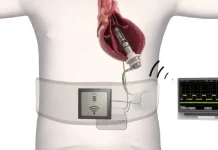Pi-Cardia announced the FDA granted clearance for its ShortCut leaflet modification device for TAVR procedures. Rehovot, Israel-based Pi-Cardia designed ShortCut to split the leaflets prior to transcatheter valve treatment in patients at risk for coronary obstruction after transcatheter aortic valve replacement (TAVR) or left ventricular outflow tract (LVOT) obstruction after transcatheter mitral valve replacement (TMVR).
Related: Human in Motion Robotics secures Canadian approval for XoMotion exoskeleton
ShortCut enables valve-in-valve TAVR procedures in patients at risk of coronary obstruction. The company says it represents the world’s first dedicated device designed to split the leaflets prior to valve treatment. FDA clearance comes just over two years after the first-in-human procedures conducted with ShortCut in Germany.
Dr. Martin B. Leon, director of the Center for Interventional Vascular Therapy at New York-Presbyterian/Columbia University Medical Center and professor of medicine at the Columbia University College of Physicians and Surgeons, chairs the global steering committee for ShortCut studies. Leon said the device ensures that coronary obstruction is addressed before implanting a valve.
According to Leon, ShortCut’s pivotal study demonstrated both safety and effectiveness in achieving the intended leaflet split in all patients. Importantly, he said it highlighted the controlled and teachable nature of mechanical splitting with ShortCut. That came in both single- and dual-leaflet cases. This could make it adoptable by TAVR centers as a critical pre-implant step, Leon said.
“We are excited and immensely proud to introduce the first dedicated leaflet modification device to the U.S. market,” said Erez Golan, Pi-Cardia CEO. “With FDA clearance now in hand, we are focused on building a strong commercial and clinical support team to execute a limited commercial launch while ensuring optimal patient outcomes.
“ShortCut clearance by the FDA opens a new era in the lifetime management of patients with aortic stenosis.”






